The Hairy giraffe… IN TAIWAN
Taiwan was the fourth stop on our world tour. We chose to stop there to soak up modernity before continuing our journey. We were also curious to discover this part of the world claimed by China.
We decided to tour the island. While we had initially planned a road trip, we reconsidered our plans because the cost of renting a car for two weeks was too high for our budget as world travelers. So, we opted for the train, which took us between four cities.
How long? We spent two weeks in Taiwan.
When? Mid-February. We wanted to witness the Lunar New Year celebrations and enjoy mild weather.
Ease of independent travel: 4 giraffes ![]() It is entirely possible to rent a car if you wish to tour the island on a road trip (provided you have an international driving permit). Driving in Taiwan is rather calm and quiet, and the traffic rules are respected by drivers (though not necessarily by motorcyclists). Some companies offer daily car rentals, which can be convenient for accessing less well-served areas. Road signs are bilingual in Chinese and English.
It is entirely possible to rent a car if you wish to tour the island on a road trip (provided you have an international driving permit). Driving in Taiwan is rather calm and quiet, and the traffic rules are respected by drivers (though not necessarily by motorcyclists). Some companies offer daily car rentals, which can be convenient for accessing less well-served areas. Road signs are bilingual in Chinese and English.
In major cities like Taipei and Kaohsiung, a subway system is available. It is efficient and easy to use. An interesting point to note is that the same transportation card can be used throughout the country. In other words, the card you purchase upon arrival in Taipei can be used to take the subway and buses anywhere on the island. Additionally, for collectors of cute things, it is possible to find cards in all shapes (cats, manga characters, bubble tea cups, motorcycle helmets, etc.). Trains are also convenient for connecting different cities. Uber is not available everywhere, and taxis are expensive.
Costs: 4 giraffes ![]() Traveling to Taiwan requires a certain budget. The price of accommodation and restaurants is not very different from European countries, and street food is not always cheap. You will find many products imported from Japan and America at inevitably higher prices. If you wish to rent a car, it will cost you quite a bit, even for a small car. National highways are toll roads, and parking in the commercial streets of the island’s cities is paid (and expensive).
Traveling to Taiwan requires a certain budget. The price of accommodation and restaurants is not very different from European countries, and street food is not always cheap. You will find many products imported from Japan and America at inevitably higher prices. If you wish to rent a car, it will cost you quite a bit, even for a small car. National highways are toll roads, and parking in the commercial streets of the island’s cities is paid (and expensive).
Ease of communication: 2 giraffes ![]() It is not always easy for a tourist who does not speak Chinese to make themselves understood in Taiwan. While many young Taiwanese people speak English, this is not necessarily the case for older individuals. In several hotels we visited, the staff did not speak a word of English. In shops, everything is generally written exclusively in Chinese. We highly recommend having a local SIM card to have internet access and thus be able to use translation websites or apps. Google Translate greatly facilitated our lives.
It is not always easy for a tourist who does not speak Chinese to make themselves understood in Taiwan. While many young Taiwanese people speak English, this is not necessarily the case for older individuals. In several hotels we visited, the staff did not speak a word of English. In shops, everything is generally written exclusively in Chinese. We highly recommend having a local SIM card to have internet access and thus be able to use translation websites or apps. Google Translate greatly facilitated our lives.
Safety: 4 giraffes ![]() The crime rate and violent crimes are rare in Taiwan. Snatch thefts can occur, especially in major cities. Therefore, respecting basic rules is necessary. Pedestrians, however, should still be cautious, especially at intersections: drivers may not necessarily give you the right of way. It’s impossible not to mention the threats of invasion of the territory by China, taken very seriously here. We saw numerous air raid shelters scattered throughout Taipei.
The crime rate and violent crimes are rare in Taiwan. Snatch thefts can occur, especially in major cities. Therefore, respecting basic rules is necessary. Pedestrians, however, should still be cautious, especially at intersections: drivers may not necessarily give you the right of way. It’s impossible not to mention the threats of invasion of the territory by China, taken very seriously here. We saw numerous air raid shelters scattered throughout Taipei.
Health: 4 giraffes ![]() The healthcare system is modern, and hygiene is very good throughout the island. The water is said to be potable, but the aging of the pipelines makes it not recommended to drink. Also, be cautious of mosquito bites, especially in rural areas: cases of dengue and chikungunya have been reported.
The healthcare system is modern, and hygiene is very good throughout the island. The water is said to be potable, but the aging of the pipelines makes it not recommended to drink. Also, be cautious of mosquito bites, especially in rural areas: cases of dengue and chikungunya have been reported.
Gay friendly : 5 giraffes ![]() Homosexual relationships are allowed and have never been prohibited throughout the country’s history. The rights of LGBT+ individuals are very good. They have access to marriage, adoption, and gender change. Displays of affection remain discreet (even for heterosexual couples).
Homosexual relationships are allowed and have never been prohibited throughout the country’s history. The rights of LGBT+ individuals are very good. They have access to marriage, adoption, and gender change. Displays of affection remain discreet (even for heterosexual couples).
Travel ease: 5 giraffes ![]() No particular concerns for visiting this country.
No particular concerns for visiting this country.
Highlights: ![]() Watching the sunset over Taipei 101 from the top of Elephant Mountain, participating in the lantern release at the Pingxi Lantern Festival, and experiencing the kindness of the Taiwanese people.
Watching the sunset over Taipei 101 from the top of Elephant Mountain, participating in the lantern release at the Pingxi Lantern Festival, and experiencing the kindness of the Taiwanese people.
Letdowns: ![]() The lack of real hikes at Taroko Gorge, long queues for restaurants (sometimes estimated wait times were over two hours), and the very approximate organization of the Pingxi Lantern Festival (ticket distribution, crowd management, site departure).
The lack of real hikes at Taroko Gorge, long queues for restaurants (sometimes estimated wait times were over two hours), and the very approximate organization of the Pingxi Lantern Festival (ticket distribution, crowd management, site departure).
Check out our Travel Reflections articles on Taiwan :
TWO-WEEK ITINERARY IN TAIWAN
Here is the detailed itinerary of our two weeks in Taiwan:
Day 0: A little over a three-hour flight from Phnom Penh. We arrive at our hotel in Taipei in the late evening.
Day 1: We start the day with a stroll around the Ximending district. Although several shops are still closed due to the early hour, the neighborhood is lively.


We appreciate the tall buildings with their chaotic displays reminiscent of Seoul (albeit more modest) and the Lunar New Year decorations.




We pass by the Presidential Office Building on our way to the Chiang Kai-shek Memorial Hall.


The square is impressive, and the statue is imposing.





After having a picnic in a park, we take the metro towards Taipei 101, the former tallest building in the world. The tower, inevitably impressive from below, fits very well into the landscape. Its oriental style reminds us that we are indeed in Asia.


We then set out to find a bubble tea for Benjamin and the recently opened Pokémon Center for François. At the entrance of the shopping center, we witness a music and acrobatics show presented as part of the New Year celebrations.


If we drink the tea relatively quickly, the visit to the Pokémon Center will have to wait. Access to the shop is at the precise time indicated on the coupon we receive: 7:20 PM, which is four hours later!
While waiting, we decide to hike to the top of Elephant Peak. This way, we’ll have a sublime view of the city and Taipei 101. We’ll stay there until sunset.

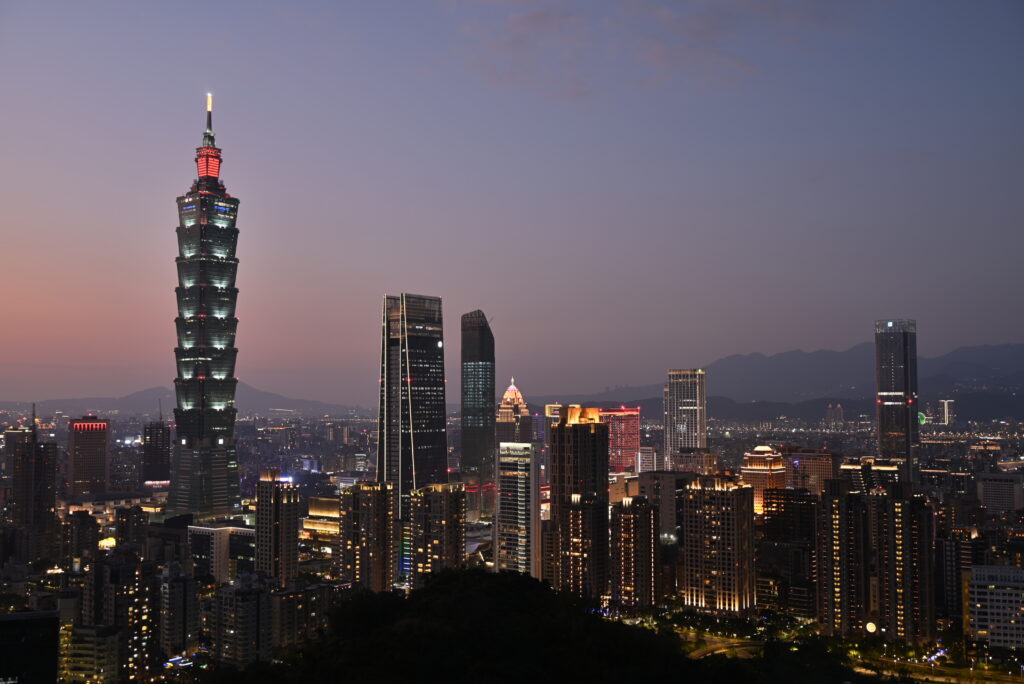
We return to the Pokémon Center to finish off this day in the Taiwanese capital, where we will return at the end of our trip.
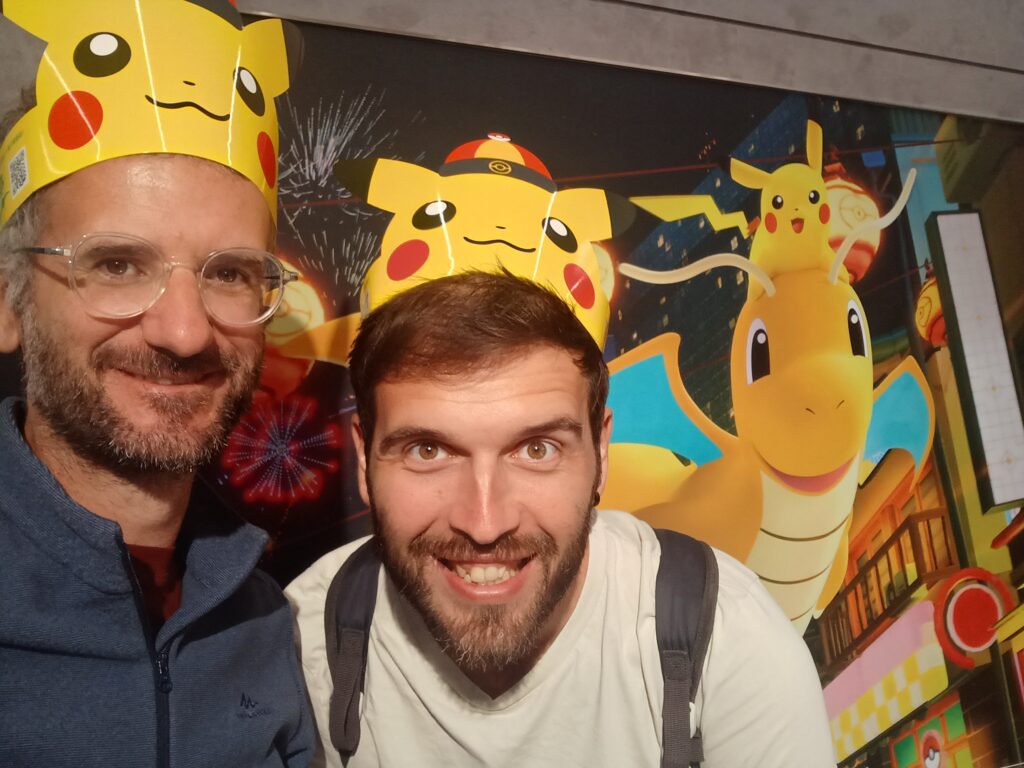

Day 2: We pick up our train tickets (reserved online the day before) at the station. About 2 hours and 30 minutes on a modern train are needed to take us to Hualien.

After dropping off our bags at the hotel, we set out, hungry, in search of a restaurant. We encounter several refusals: due to the New Year, restaurants are fully booked… A McDonald’s will ultimately save the day for us.
We then take a stroll around the city before going to reserve a car for the next day.



Day 3: We pick up our car around 9:30 AM and head out to explore Taroko Gorge, located about thirty kilometers north of the city. We set out with the idea of spending a day hiking. We are somewhat disappointed: most of the trails are actually walks along the roadside, sometimes literally on the road. Nevertheless, the views of the gorge and the crystal-clear water reminiscent of the lagoons of Polynesia are beautiful.






We also encountered a few Formosan macaques, endemic to Taiwan.


From our visit to the gorges, we especially appreciate the Xiangde Temple, where calm and serenity are omnipresent.





We leave the park and take advantage of the car to go see the Pacific Ocean.

We then spend the evening at the night market, where we sample Taiwanese cuisine before enjoying, by the seaside, the Hualien Lantern Festival, where dragons are featured.


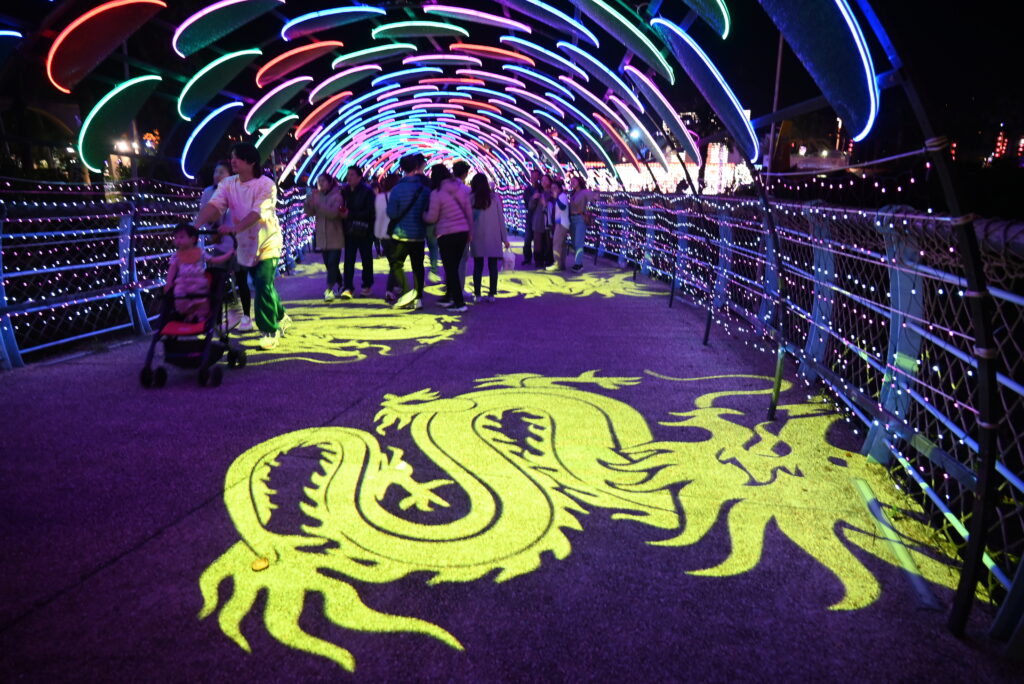



Day 4: In the morning, we visit the Taoist Gangtian Temple. Its facade adorned with colorful dragons is impressive and contrasts with the more sober Buddhist or Hindu temples we have seen so far.





We go to a restaurant for lunch.

In the evening, we head out to enjoy the lively downtown area.





Day 5: 4 hours and 30 minutes by train take us to Kaohsiung. The journey is a bit long since we’re not on a high-speed train. However, it gives us time to admire the landscapes, which are a mix of tropical forests and mountains shrouded in clouds. It also allows us to taste the “famous” bentos from the Taiwanese railway company that many bloggers talk about. A very good value for money.





We drop off our bags at the hotel before setting out to explore the city. We’ve spotted a lively neighborhood near Central Park (nothing like New York’s). We’re a bit disappointed. The city is rather noisy with a significant number of cars and scooters moving on very wide streets. The neighborhood does have several shops but doesn’t offer anything particularly interesting.

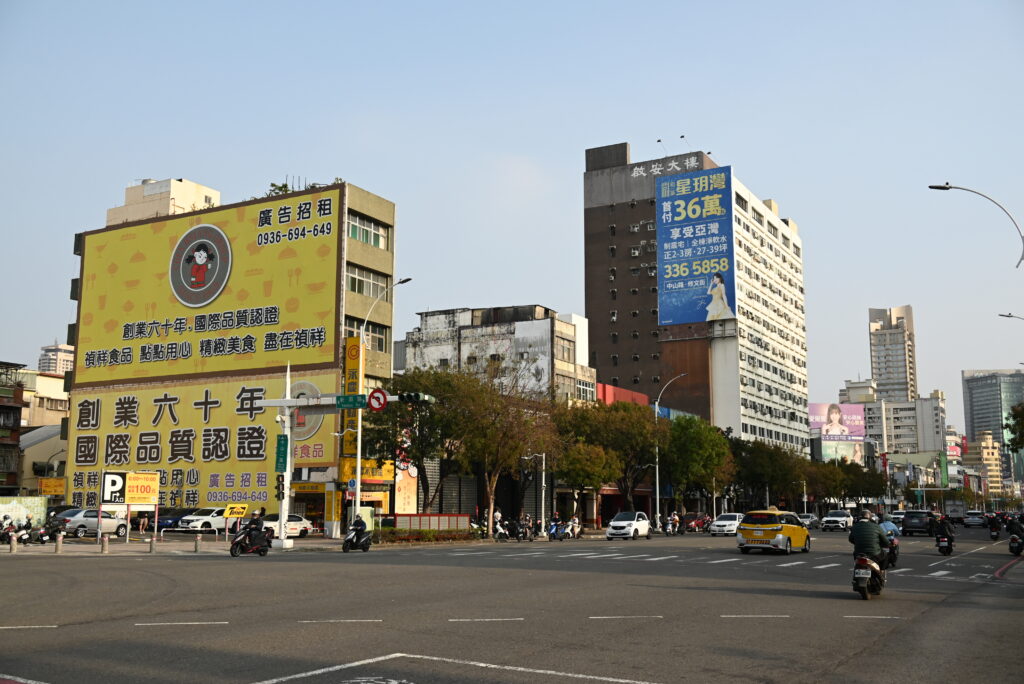
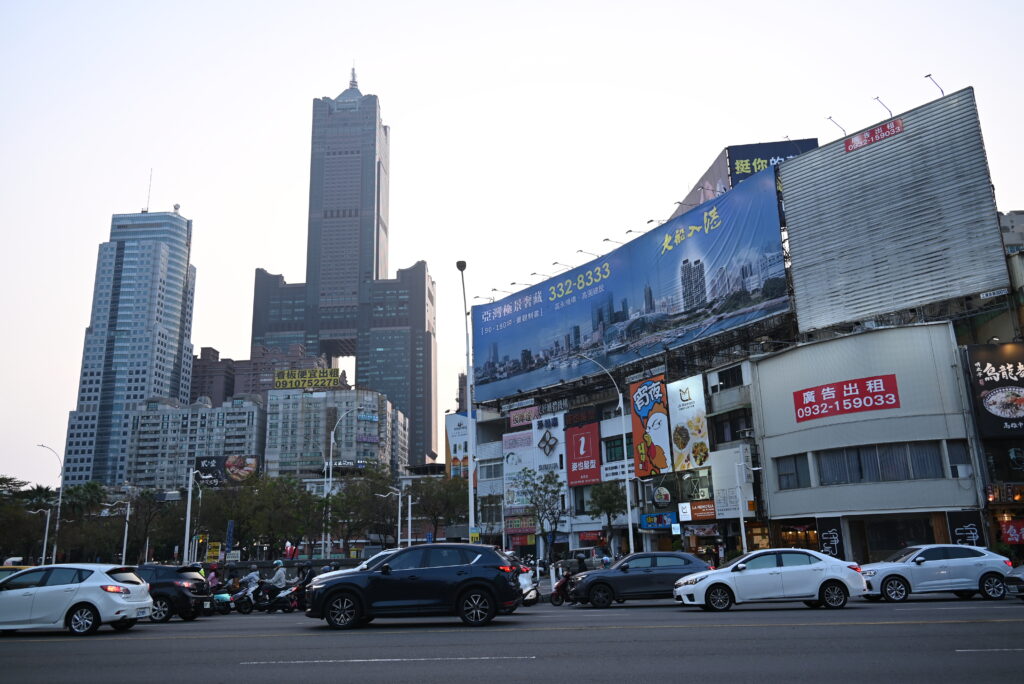
Day 6: We had initially planned two visits for this day. We were supposed to start the day at the Fo Guang Shan Buddhist Museum and end it at the Dragon and Tiger Pagodas. While we managed to visit the museum, we changed our plans for the pagodas: they are completely under construction for an entire year.
The journey to the Buddhist museum is not convenient. If we don’t want to take a taxi, the only way to get there is by bus. The only problem: there is only one bus per hour, and only 46 people can board it, while the site attracts thousands of people every day… So it’s better to arrive early!
The site is gigantic. There are terraces to admire huge golden Buddhas, sanctuaries, exhibition halls… and an impressive number of restaurants and shops. It’s far from the calm and serene temples we’re used to.








The experience, although atypical, is not necessarily unpleasant, especially since we happen to stumble upon a New Year parade. We thought we would spend 2 hours on the site. We end up staying for nearly 5 and a half hours!
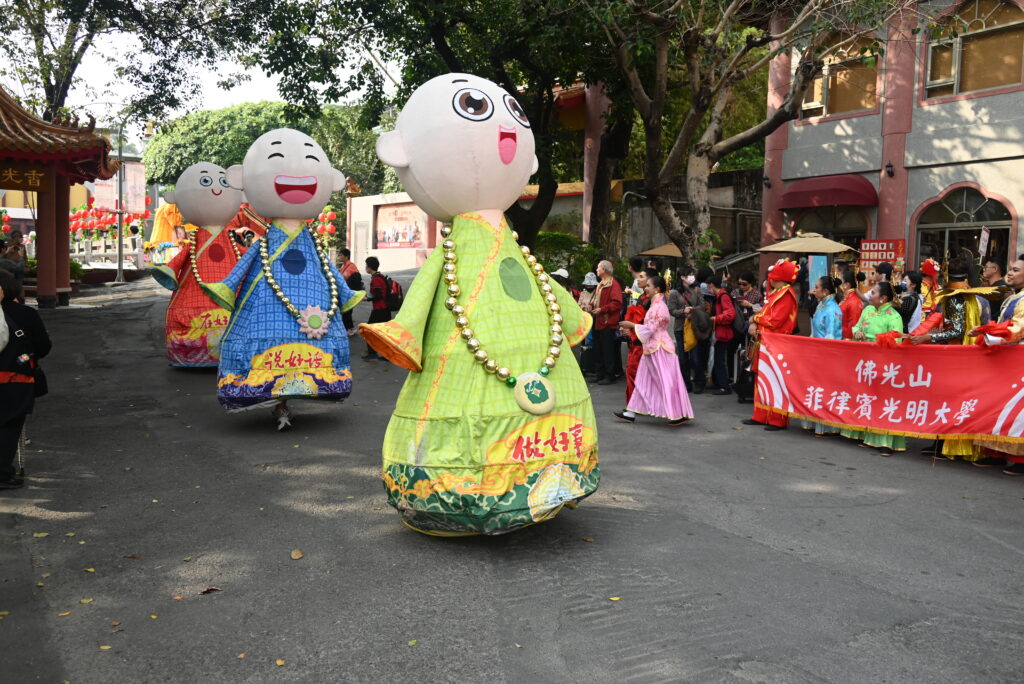





We decide to return to the city by taxi to save time. It’s with yet another bubble tea in hand that we head to the Sanfeng Temple. The temple is very beautiful, more intimate than the morning complex, and is decorated with superb lanterns.




Day 7: We take the train again, this time to Tainan. The journey is shorter: 30 minutes is enough. The walk from the station to our hotel allows us to discover a very pleasant city. Smaller than Kaohsiung, Tainan has a real soul. We truly enjoy wandering its streets.







We visit the Confucius Temple. It is the oldest Confucian temple on the island. While the main hall is quite beautiful, the rest is not very interesting and does not allow us to learn more about Confucius and his philosophy at all.


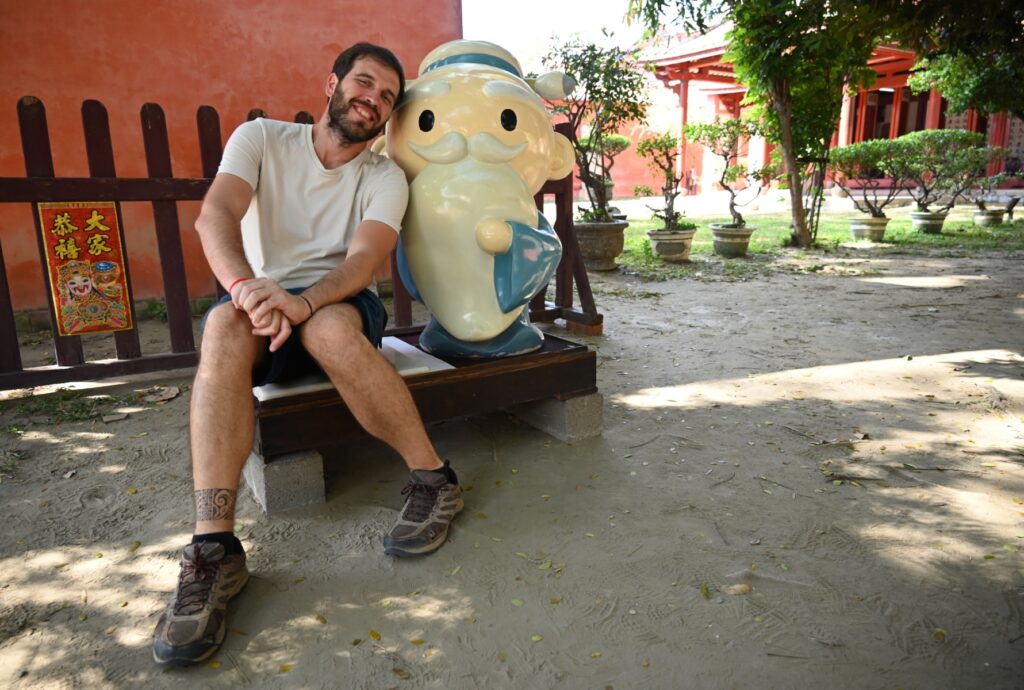



We spend the evening at the Lantern Festival… where there are no lanterns! We had already attended the Lantern Festival in Hualien. We liked the festive atmosphere there. The Tainan festival is nothing like it. No New Year’s dragons, no lanterns. Just a few illuminated structures here and there. A food corner where several people gather to order and eat, but without a real festive atmosphere. However, a drone and fireworks show beautifully closed the evening.



Day 8: We spend a day wandering the streets of the city. We start with Shennong Street, near our hotel. The street is narrow and decorated with lanterns. It’s not very long and can be explored quickly.








We then head to the Grand Mazu Temple. We really love the design and decoration of Taoist temples. It’s intricate, colorful, sparkling, and the animal representations are beautiful. We take the time to make talismans for ourselves with the materials provided to believers. One for a happy year and the other for family well-being. We’ll see if the gods are with us!





We’ll have our meal break at a nearby restaurant where we’ll enjoy a delicious beef rib noodle soup.

After a detour to a tea shop where Benjamin makes a few purchases, we grab a bubble tea (our amount of bubble teas consumed is starting to be impressive), which we drink in front of the Confucius Temple, the only green space nearby.

Day 9: We head to the Anping district, which we explore on foot.



We stop at the Guanyin Taoist Temple, where an employee, a big fan of French wines, explains the temple’s prayer ritual to us.



We then head to the old street of Anping. The street (and those nearby) are lively and charming. We make (yet again) a few purchases in the shops there.


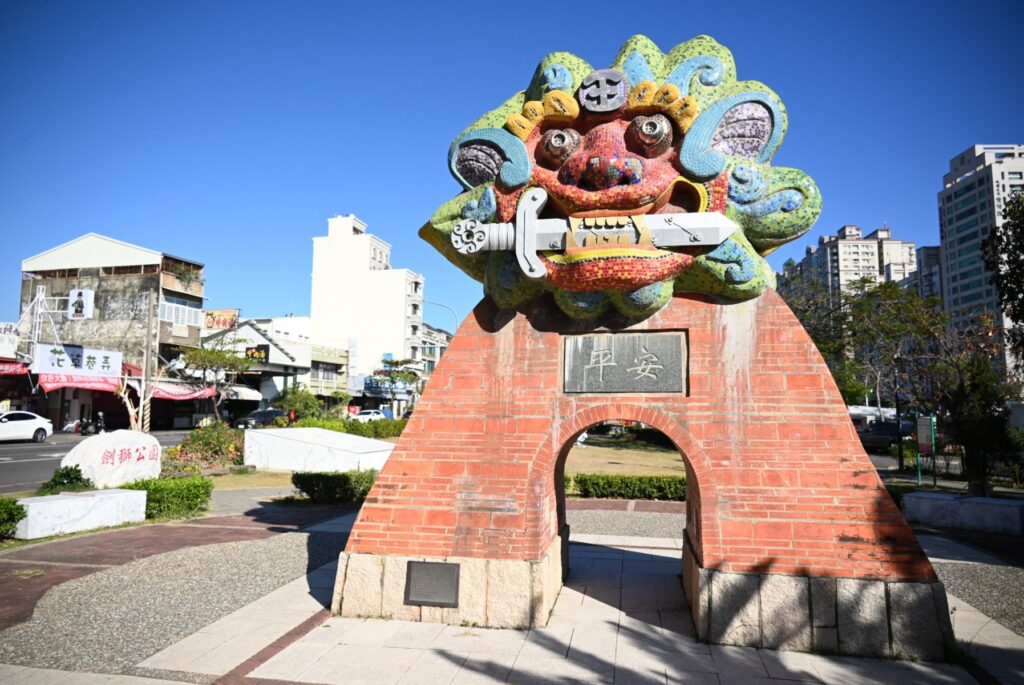

Day 10: We take the train back to Taipei. Three hours on the road allow us to complete the loop begun over a week ago.
We spend the afternoon in the Datong district. Despite the gray weather, the neighborhood is quite lively. We take the opportunity to walk along Dihua Street, the oldest street in Taipei. It’s a bit of a disappointment for us: most of the shops there sell bulk dried foods or Chinese medicine ingredients. Our noses are quickly filled with the smell of fish and seaweed.







Day 11: In the morning, we head to the Yehliu Geopark. The bus journey is quite long (1 hour and 30 minutes), and we arrive in the rain, the first since the beginning of the trip. The park is quite nice and offers beautiful rock formations created by erosion. However, as the site is relatively small, the visit quickly becomes unpleasant due to the large number of tourists. We stay at the site for just over an hour.





We take the bus back to Taipei and get off at the Sun Yat-sen Memorial stop. In addition to a huge statue of the revolutionary, the memorial contains exhibition halls that describe his life. It’s quite handy for learning a bit more about this period of Taiwanese history.



We return to spend the evening in the Ximending district, definitely more lively (and more interesting) than during our previous visit in the morning. The Taipei Lantern Festival is also in full swing there.






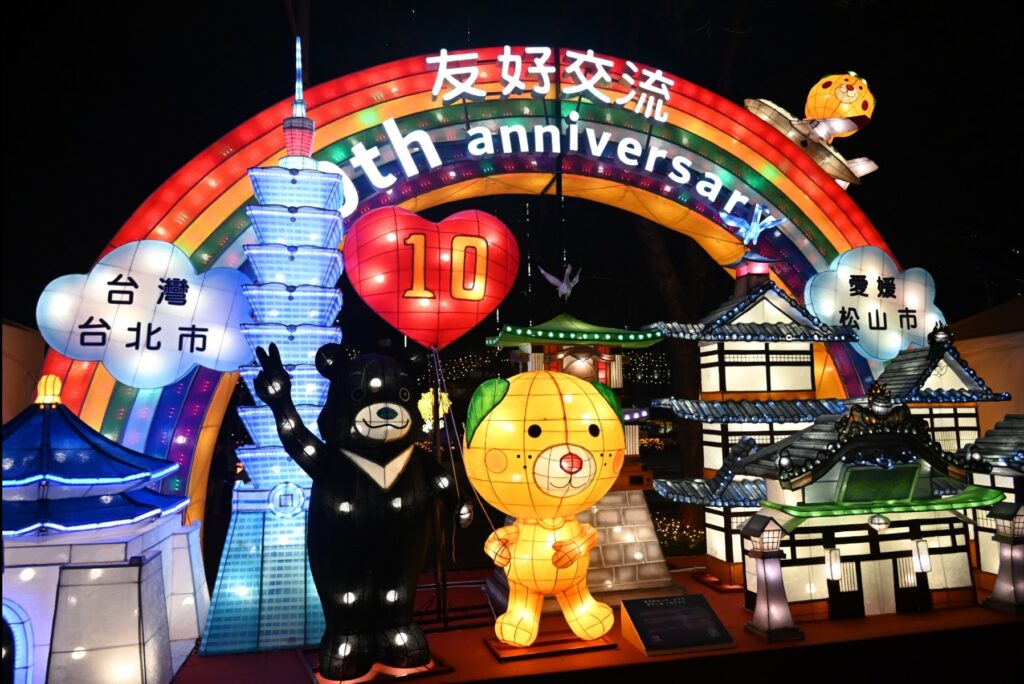



Day 12: Since the beginning of the trip, we’ve accumulated several souvenirs, and our 7 kg backpacks are starting to get quite full. It’s time to send all of this back to France. We planned to spend just a few minutes at the post office, but ended up staying there for over 1 hour and 30 minutes. It’s not easy to send a package when you don’t speak Chinese!

We take the train in the late afternoon to Ruifang, where we will spend the next two nights to attend the Pingxi Lantern Festival (in Shifen). We arrive in Ruifang in the rain and head back to the hotel to dry off.
Day 13: We take the train very early to the festival site because we want to get a ticket that will allow us to release a lantern the same evening. The places are limited to 1300 lanterns, and one lantern can be released by a maximum of 1 to 4 people.
We arrive 2 hours before the ticket booth opens, and the queue is already gigantic. However, we manage to obtain our prize, which will allow us to access the main stage in the middle of the evening.

The sky looks threatening and remains so all day, but it doesn’t rain! We spend our day wandering around the old street of Shifen. The railway that runs through it adds to the picturesque scenery. We take the opportunity to release a lantern on which we took the time to write wishes for love, money, health, and a successful career in Chinese ink. The moment is magical.



We take a look at the Shifen Waterfall, which is quite lovely.


As the afternoon progresses, more and more people arrive.



At dusk, there must be no less than 100,000 people who have invaded this tiny town.



We watch the lantern spectacle from a small bridge at the edge of town. Nine releases of 150 lanterns are scheduled during the evening. It’s a shame, however, that the stage area doesn’t accommodate spectators, and no large screen is installed. Therefore, we’re unable to see the artists on stage. However, we are very well positioned to see the lanterns take off simultaneously. 150 lanterns lighting up the sky at the same time accompanied by sublime music is a breathtaking spectacle (but difficult to capture in photos).
Then our turn comes. It’s our time to go on stage with the few privileged ones who managed to get their ticket in the morning. The moment is intense but very short. In less than 5 minutes, we’ll be placed in a designated spot, will have received our lantern, and will have scribbled on it our wishes with a simple marker. Then, all at once, we’ll release our lantern and witness, from the front row, a unique and timeless moment. The emotion is palpable as all these lanterns rise into the sky. It’s a once-in-a-lifetime experience.

The return to town will be less magical and much more chaotic. A crowd packed at the exit of the site. An endless line forming from the train station. A significantly insufficient number of trains to bring everyone back. Shuttles poorly indicated and hard to find… In short, the end of the evening will be markedly different.
Day 14: We return to Taipei where we stroll around the central station, in the City Mall, and near the Taipei 101. We return to the hotel early to rest because tomorrow, we’re taking the plane again.

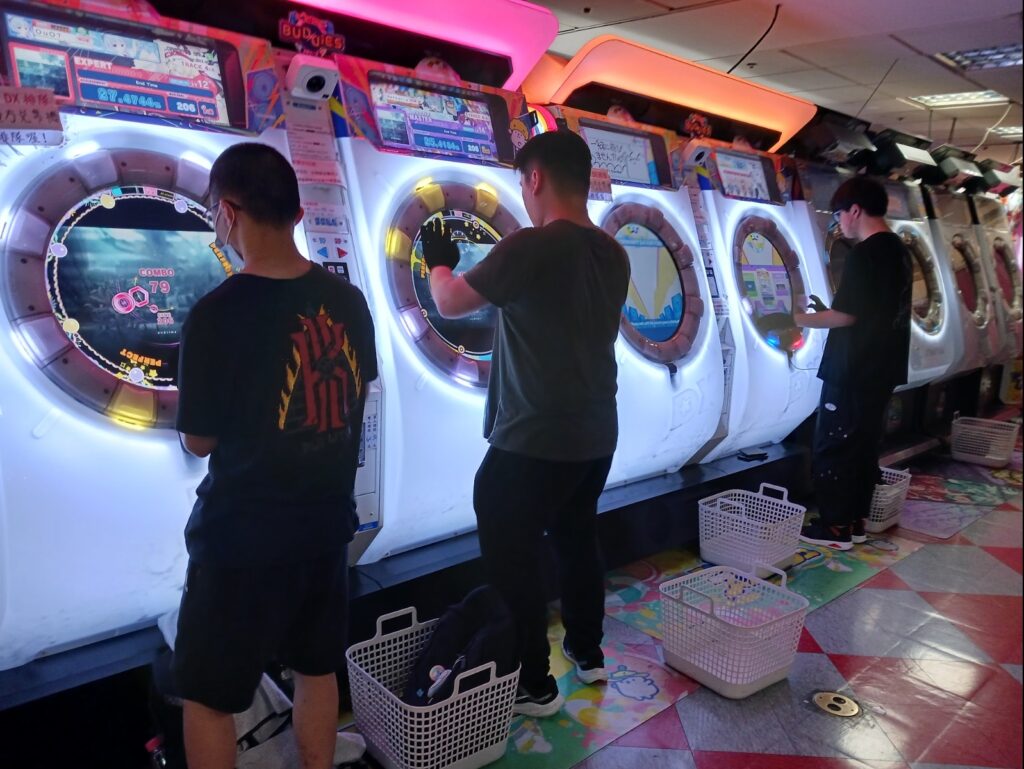
Day 15: It’s already the end of our adventure in Taiwan. We leave Taipei in the afternoon for Manila. Next stop on our world tour: the Philippines.
Find all our other articles on Taiwan :




